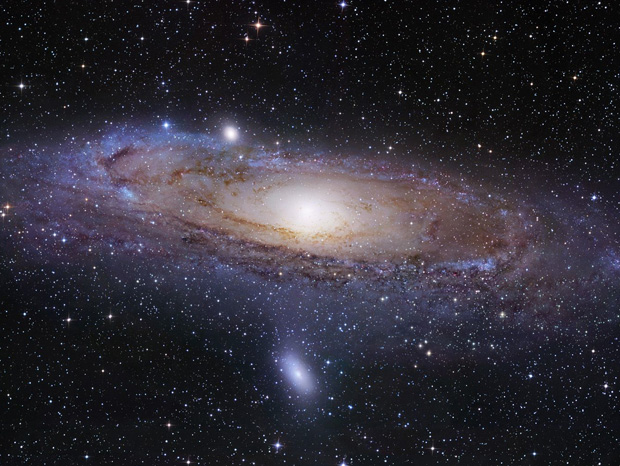Project AGORA (Assembling Galaxies of Resolved Anatomy), an ambitious multi-year project has been launched by a team of several astrophysicists to analyze, observe and resolve the many inconsistencies that exists among many different galaxy formation simulations. One of the most powerful tools in understanding the evolution and development of galaxies has been computer simulations- numerically modeled astrophysical processes are run on supercomputers and then compared with astronomical observations. A major challenge of this project is to numerically model astrophysical processes over the vastly spanned scale of the universe, and different simulation programs output inconsistent results.

Supercomputer simulations are designed using three different size scales as per three phenomena- star formation, galaxy formation and the large scale of the universe. Now computational models of stars forming within galaxies are generally zoomed in on giant molecular clouds in a volume of interstellar space several light years across with a high resolution, so that even the details smaller than our solar system could be distinguished. Now at this scale, the computational details can account for details like dust, the chemical composition of gas, supernova explosions of neighboring stars, and turbulence in interstellar gas. Contrary to this, the cosmological simulations tracing the evolution of the cosmic web of Big Band to the present day model can reach further across hundreds of millions light years.
At this large a scale, even the biggest supernova shall be limited to handling primarily simple gravitational interactions of dark matter, if the calculations are to be done within a smaller time period and also the cost cutting would be substantial.
Project AGORA (Assembling Galaxies of Resolved Anatomy), an ambitious multi-year project has been launched by a team of several astrophysicists to analyze, observe and resolve the many inconsistencies that exists among many different galaxy formation simulations. One of the most powerful tools in understanding the evolution and development of galaxies has been computer simulations- numerically modeled astrophysical processes are run on supercomputers and then compared with astronomical observations. A major challenge of this project is to numerically model astrophysical processes over the vastly spanned scale of the universe, and different simulation programs output inconsistent results.
Supercomputer simulations are designed using three different size scales as per three phenomena- star formation, galaxy formation and the large scale of the universe. Now computational models of stars forming within galaxies are generally zoomed in on giant molecular clouds in a volume of interstellar space several light years across with a high resolution, so that even the details smaller than our solar system could be distinguished. Now at this scale, the computational details can account for details like dust, the chemical composition of gas, supernova explosions of neighboring stars, and turbulence in interstellar gas. Contrary to this, the cosmological simulations tracing the evolution of the cosmic web of Big Band to the present day model can reach further across hundreds of millions light years.
At this large a scale, even the biggest supernova shall be limited to handling primarily simple gravitational interactions of dark matter, if the calculations are to be done within a smaller time period and also the cost cutting would be substantial.